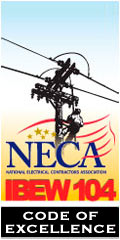
| Past Issues/Subscribe | Employment | neppa.org | Legislative Update | Advertise | August 2014 |

|
There is an expression "You can’t see the forest for the trees." Stop! This is not an article about the dysfunctional ISO-New England market construct. This is actually about a positive connotation of this expression. The expression is about being in the midst of things and not being able to see the full scope or big picture. Sometimes we have to acknowledge that we become so involved in the day to day that we don’t recognize the larger changes going on around us. Over the past month the media has been inundated with stories about the decline of customer service in the United States. The most recent being the Comcast audio clip on U-tube that features a customer service representative who harasses and out talks a customer who is trying to cancel service. The customer called after his wife gave up. He then spends 18 minutes on the phone with a rude service representative who refuses to process the cancelation until he is given a reason for the order.
I have to admit that I was frustrated listening to this, partly because I am the person who prefers to go through self check out just to avoid contact, but also because it seemed so foreign and odd. When speaking with friends they couldn’t understand why I felt this way. To them it was an extreme example of the common place.
So, why was my impression so different? Then it occurred to me: it is because of all of you. Over the past two years I have been steadily making the rounds to members and this has tainted my expectations in a good way. I have seen exemplary customer service from all of you. Many of you still have in-person bill payment where customers come in and you engage them on a personal level.
When in waiting areas I have seen:
When out in the field I have seen crews:
Why do I see all of this good will? Because it is ingrained in the public power business model, which is more community than business and that is a good thing.
Wildly varying estimates have the US at anywhere between 65-90% a service economy. But, as one of the original customer service industries, we have not succumbed to the changing forest. We have focused on what is in front of us, the customer. While other industries and segments of the power industry have focused on the return on investment, we have focused on the people before us. Because of this we haven’t stopped to recognize how, while service devolves around us, ours has continued to shine.
So, please take a minute and think about how many groups you know that provide the great service that you and your utility do. Now think about who the shining stars are at your utility that inspire others.
These folks deserve recognition. Maybe they are common to your organization, but they are not everywhere. Take a moment and click here to download a form to nominate your shining stars and send your folks to the one conference a year that motivates and recognizes their service. To find out more information or to register, click here!
The Carol A. Tracey Award for Customer Service is for any employee who has given exemplary service.
|



